
Distinguished Practice-trained Architects
(renowned architects with no formal qualification in architecture)
 |
Desmond Rea O’Kelly - (November 7, 1923 – February 18, 2011) was the architect of Liberty Hall. Rather than qualifying as an architect, he became an architect. View from Liberty Hall on YouTube - Desmond Rea O’Kelly on Archiseek - Desmond Rea O’Kelly on Wikipedia |
 |
Michael Scott - (24 June 1905 – 24 January 1989) was an Irish architect whose buildings included the Busáras building in Dublin, the Abbey Theatre, and Tullamore Hospital. He was born in Drogheda in 1905. His family originated in the Province of Munster. Michael Scott on Archiseek - Michael Scott on Wikipedia - Michael Scott on Youtube |
 |
Tadao Ando - (born September 13, 1941) a Japanese architect whose approach to architecture was categorized by Francesco Dal Co as critical regionalism. Ando has led a storied life, working as a truck driver and boxer prior to settling on the profession of architecture, despite never having taken formal training in the field. In 1995, Ando won the Pritzker Architecture Prize, considered the highest distinction in the field of architecture. Tadao Ando's website - Tadao Ando on Wikipedia - Tadao Ando on FaceBook |
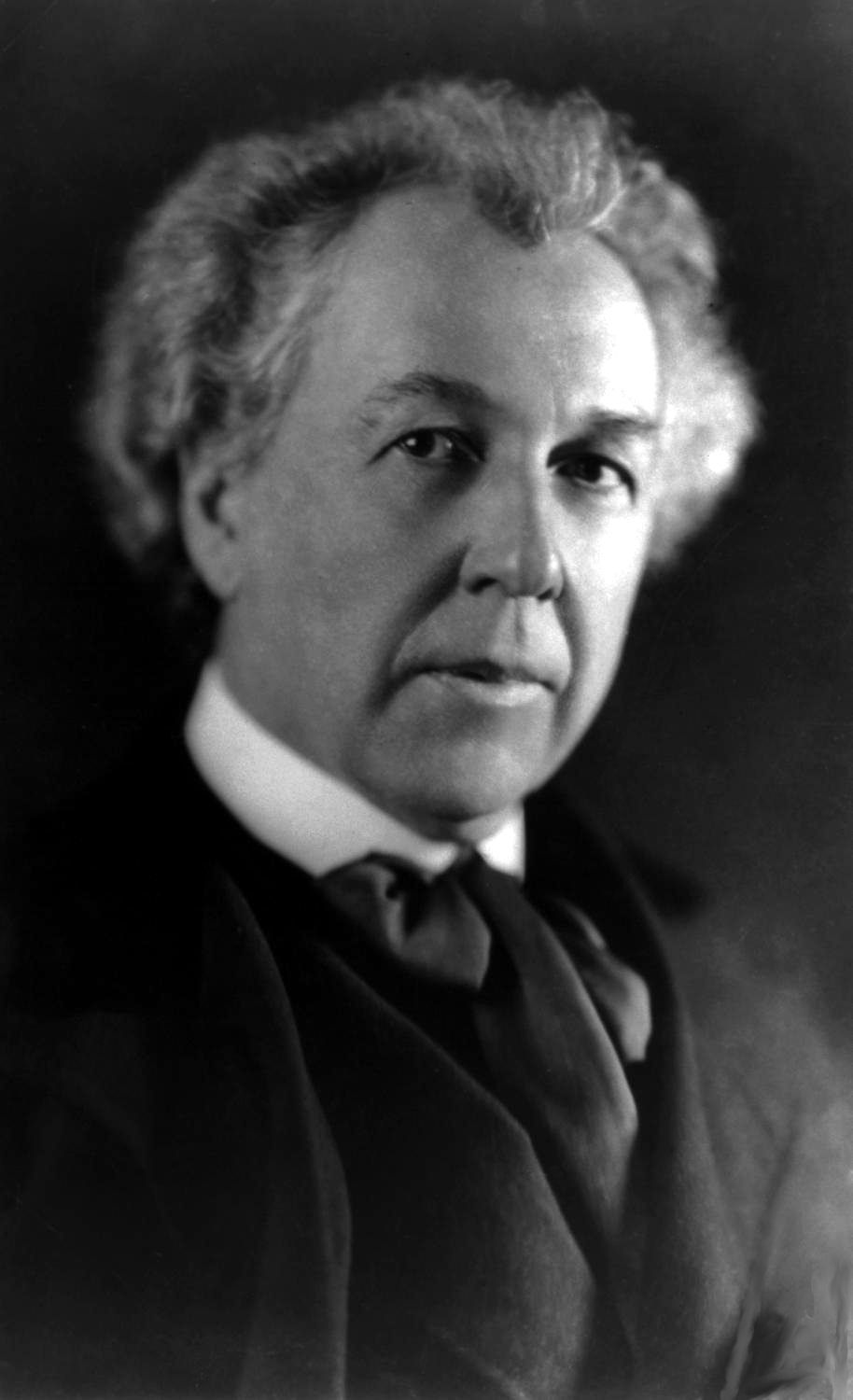 |
Frank Lloyd Wright - (born Frank Lincoln Wright, June 8, 1867 – April 9, 1959) was an American architect, interior designer, writer and educator, who designed more than 1,000 structures and completed 500 works. Wright believed in designing structures which were in harmony with humanity and its environment, a philosophy he called organic architecture. The Frank Lloyd Wright Foundation - Frank Lloyd Wright on Wikipedia - Frank Lloyd Wright on YouTube |
 |
Charles Rennie Mackintosh - (7 June 1868 – 10 December 1928) was a Scottish architect, designer, water colourist and artist. His artistic approach had much in common with European Symbolism. His work, alongside that of his wife Margaret Macdonald, was influential on European design movements... The CRM Society - Charles Rennie Mackintosh on Wikipedia - Charles Rennie Mackintosh by Dr Laurence Shafe |
 |
Charles-Édouard Jeanneret - better known as Le Corbusier (October 6, 1887 – August 27, 1965) was an architect, designer, urbanist and writer, famous for being one of the pioneers of what is now called modern architecture. Le Corbusier's theories were adopted by the builders of public housing in Western Europe and the United States. Le Corbusier Foundation - Le Corbusier on Artsy - Le Corbusier Interview |
 |
Philip Johnson - (July 8, 1906 – January 25, 2005) In 1930, he founded the Department of Architecture and Design at the Museum of Modern Art in New York City, and later (1978), as a trustee, he was awarded an American Institute of Architects Gold Medal and the first Pritzker Architecture Prize, in 1979. Philip Johnson on Wikipedia - Philip Johnson on YouTube - Philip Johnson's Quotes |
 |
Lebbeus Woods - (May 31, 1940 – October 30, 2012) Author of nine books, he was a 1994 recipient of the Chrysler Design Award. He was a professor of architecture at the Cooper Union in New York City and at the European Graduate School in Saas-Fee, Switzerland. Lebbeus Woods on Wikipedia - lebbeuswoods.net - The Drawing center |
 |
David Salmela - (Born in 1945) is a creative self-trained architect practicing in Duluth, Minnesota. Since 1985, Salmela’s projects have won 14 Minnesota AIA Honor Awards and 16 national level awards including a National AIA Honor Award for Architecture. David Salmela's website - David Salmela on YouTube |
 |
Kathleen Eileen Moray Gray - (August 9, 1878 – October 31, 1976) An Irish furniture designer and architect and a pioneer of the Modern Movement in architecture Eileen Gray on Wikipedia - Eileen Gray permanent exhibition Dublin 7 - Villa E1027 |
 |
Charles and Ray Eames - respectively (1907–1978) & (1912–1988) were American designers, who worked in and made major contributions to modern architecture and furniture. In 1977 they received the AIA Twenty-five Year Award. Eamesoffice.com - Charles & Ray Eames on Wikipedia - Charles & Ray on YouTube |
 |
Sir Raymond Unwin - (1863 – 1940) was a prominent and influential English engineer, architect and town planner, with an emphasis on improvements in working class housing. Unwin was President of the Royal Institute of British Architects (RIBA) from 1931 to 1933, was knighted in 1932 and consulted by United States President Franklin D. Roosevelt on the New Deal in 1933. Raymond Unwin on Wikipedia - The Town Extension Plan |
 |
Peter Zumthor - (born 26 April 1943) In 1994, he was elected to the Akademie der Künste in Berlin. In 1996, he was made an honorary member of the Bund Deutscher Architekten (BDA). In 1998, Zumthor received the Carlsberg Architecture Prize for his designs of the Kunsthaus Bregenz in Bregenz, Austria and the Thermal Baths at Vals, Switzerland. He won the Mies van der Rohe Award for European Architecture in 1999. Recently, he was awarded Praemium Imperiale in (2008) and the Pritzker Architecture Prize (2009). Peter Zumthor Projects - Peter Zumthor on Wikipedia - Peter Zumthor on YouTube |
 |
Ludwig Mies van der Rohe - (March 27, 1886 – August 17, 1969) He strived towards an architecture with a minimal framework of structural order balanced against the implied freedom of free-flowing open space. He called his buildings "skin and bones" architecture. He sought a rational approach that would guide the creative process of architectural design. Mies van der Rohe on Archinform - Mies van der Rohe on Wikipedia - Mies van der Rohe Society |
 |
Alexandre Gustave Eiffel - (December 15, 1832 – December 27, 1923) was a French structural engineer from the École Centrale Paris, an architect, an entrepreneur and a specialist of metallic structures. He is acclaimed for designing the world-famous Eiffel Tower, built 1887–1889. Eiffel Tower History - Eiffel on Wikipedia - Eiffel Tower on YouTube |
 |
Thomas Heatherwick - (born 17 February 1970) graduated in Design from the Royal College of Art, he awarded honorary doctorates from four British universities and received a RIBA Awards in 2008. He heads Heatherwick Studio, a design and architecture studio, which he founded in 1994 Heatherwick Studio - Thomas Heatherwick on Wikipedia - Thomas Heatherwick on Instagram |
 |
Louis Henri Sullivan - (September 3, 1856 – April 14, 1924) was an American architect, and has been called the "father of skyscrapers" and "father of modernism" He coined the phrase "form ever follows function", which, shortened to "form follows function," would become the great battle-cry of modernist architects. Louis Sullivan on Wikipedia - Louis Sullivan by the Art Institute of Chicago |
 |
Pietro Belluschi - (August 18, 1899 — February 14, 1994) was an American architect, a leader of the Modern Movement in architecture, and was responsible for the design of over one thousand buildings. Pietro Belluschi on Wikipedia - Church of St. Gregory the Great |
 |
Jacque Fresco - (born March 13, 1916) His interests span a wide range of disciplines including several in philosophy, science, Architecture and engineering. Fresco writes and lectures extensively on his view of subjects ranging from the holistic design of sustainable cities, energy efficiency, natural resource management, cybernated technology, advanced automation, and the role of science in society, focusing on the benefits he thinks they may bring. The Venus Project - Jacque Fresco on Wikipedia - Jacque Fresco on YouTube |
 |
Eugène Viollet-le-Duc - (1814–1879) was a French architect and theorist, famous for his interpretive "restorations" of medieval buildings. Born in Paris, he was a major Gothic Revival architect. His theories inspired a generation of modern architects, including Louis Sullivan, and Frank Lloyd Wright Viollet-le-Duc on Wikipedia - Viollet-le-Duc's Theories on Restoration |
 |
Iannis Xenakis - (May 29, 1922 – February 4, 2001) As an architect, Xenakis is primarily known for his early work under Le Corbusier: the Sainte Marie de La Tourette, on which the two architects collaborated, and the Philips Pavilion at Expo 58, which Xenakis designed alone. He integrated music with architecture, designing music for pre-existing spaces, and designing spaces to be integrated with specific music compositions and performances. Iannis-Xenakis.org - Iannis Xenakis on Wikipedia - Iannis Xenakis on YouTube |
 |
Peter Behrens - (April 14, 1868 – February 27, 1940) was a German architect and designer. He was important for the modernist movement, as several of the movements leading names (for example Ludwig Mies van der Rohe, Le Corbusier and Walter Gropius) worked for him when they were young. behrens-peter.com - Peter Behrens on Wikipedia - Peter Behrens on Youtube |
Will Bruder - (born in 1946) received a Bachelor of Fine Arts in sculpture from the University of Wisconsin–Milwaukee in 1968. Bruder's largest structure is the Burton Barr Central Library in Phoenix, Arizona, a five-story, 280,000-square-foot (26,000 m²) civic landmark that houses an open, one-acre (4,000 m²) reading room and a five-floor, glass-and-steel elevator and stair well (the "Crystal Canyon"). WillBruder.com - Future of Design conference - Will Bruder on Wikipedia |
 |
Jack Hall - (1913–2003) was an American architect and industrial designer working in the Modernist style. Hall is best known for his residential works on Massachusetts' Cape Cod which were designed to nestle within, rather than overtake, the natural landscape. Hatch Cottage - Jack Hall on Wikipedia |
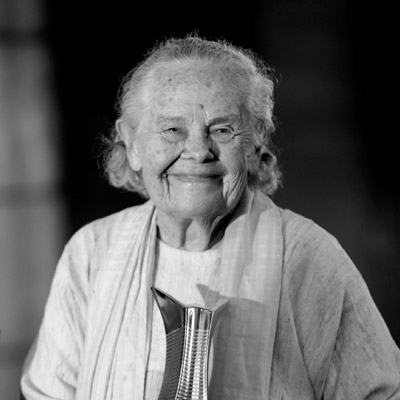 |
Didi Contractor - (12 October 1929 – 5 July 2021) Worked as an architect in India for nearly 30 years, Didi Contractor (née Delia Kinzinger) designed and constructed dozens of mud buildings in Kangra, trained and empowered numerous local craftspeople, and imparted her knowledge to hundreds of architecture students from across the country. Didi Contractor on Wikipedia - didi-contractor-documentary.com - worldarchitecture.org |
 |
Francis Barry Byrne - (19 December 1883 – 18 December 1967) was initially a member of the group of architects known as the Prairie School. After the demise of the Prairie School about 1914-16, Byrne continued as a successful architect by developing his own personal style. Francis Barry Byrne on Wikipedia - Prairie Styles |
 |
Luis Barragan Morfin - (March 9, 1902 – November 22, 1988) was a Mexican architect. He worked for years with little acknowledgement or praise until 1975 when he was honored with a retrospective at the Museum of Modern Art in New York. In 1980, he became the second winner of the Pritzker Prize. His house and studio, built in 1948 in Mexico City, were listed as a UNESCO World Heritage site in 2004. The Luis Barragan Foundation - Luis Barragan on Wikipedia - Luis Barragan on YouTube |
 |
Nail Çakirhanon - (July 14, 1910 – October 10, 2008) Recipient of the Aga Khan Award for Architecture, 1983. He left his print particularly in the architecture of the coastal township of Akyaka in southwestern Turkey through old houses he had repaired and restored or new houses built in accordance with the traditional styles and approaches of Turkish/Ottoman/Aegean houses, supplemented with innovative conceptions and designs. Nail Çakirhanon on Wikipedia - private residence |
 |
Pier Luigi Nervi - (June 21, 1891 – January 9, 1979) taught as a professor of engineering at Rome University from 1946-61. He is widely known as a structural engineer and an architect, and for his innovative use of reinforced concrete. PierLuigiNervi.org - Pier Luigi Nervi on Wikipedia - PALAZZETTO dello SPORT |
 |
Robert Venturi - (born June 25, 1925) One of the major figures in the architecture of the twentieth century. In 1943 he graduated from the Episcopal Academy in Philadelphia. He entered Princeton University and received a bachelor of arts (summa cum laude) in 1947 and master of fine arts in 1950. www.VSBA.com - Robert Venturi on Wikipedia - Postmodern movement |
 |
Jacques Couëlle - (1902–1996) was a friend of Pablo Picasso and Salvador Dalí. For his artistic merits, he was awarded the Legion of Honour at the French Academy. Nicknamed "the architect of billionaires" he created exceptional homes. His relationship with nature is associated with the organic architecture of Antoni Gaudí. Architecture Sculpture - Jacques Couëlle on Wikipedia |
 |
Gerrit Thomas Rietveld - (24 June 1888–25 June 1964) was a Dutch furniture designer and architect. One of the principal members of the Dutch artistic movement called De Stijl, Rietveld is famous for his Red and Blue Chair and for the Rietveld Schröder House, which is a UNESCO World Heritage Site. Gerrit Rietveld on YouTube - Schroder House - Gerrit Rietveld on Wikipedia |
 |
Frei Paul Otto - (31 May 1925 – 9 March 2015) was a German architect and structural engineer noted for his use of lightweight structures, in particular tensile and membrane structures, including the roof of the Olympic Stadium in Munich for the 1972 Summer Olympics. Otto won the RIBA Royal Gold Medal in 2006 and was awarded the Pritzker Architecture Prize in 2015, shortly before his death. Frei Paul Otto on YouTube - Pritzker Architecture Prize - Frei Paul Otto on Wikipedia |
Auguste Perret - (12 February 1874 - 25 February 1954) He studied architecture at the École des Beaux-Arts, Paris, but left before receiving his diploma to enter his father’s business. was a French architect and a world leader and specialist in reinforced concrete construction. In 2005 his post-WWII reconstruction of Le Havre was declared by UNESCO one of the World Heritage Sites. Le Havre - Auguste Perret on Wikipedia |
 |
Terunobu Fujimori - (born November 21, 1946) A Japanese architect and architectural historian. He did not turn to architecture until he was in his forties. His work is considered by many to be eccentric and is characterised by his use of natural materials. Although he is well known in Japan as a cultural commentator he was not widely known in the West until he represented Japan at the 2006 Venice Biennale. Fujimori on Arch Daily - Tree House - Fujimori on Wikipedia |
 |
Hassan Fathy - (1900 – 1989) A noted Egyptian architect who pioneered appropriate technology for building in Egypt, especially by working to re-establish the use of mud brick (or adobe) and traditional as opposed to western building designs and lay-outs. Fathy was recognized with the Aga Khan Award for Architecture Chairman's Award in 1980. Hassan Fathy on Youtube - NEW GOURNA VILLAGE - Hassan Fathy on Wikipedia |
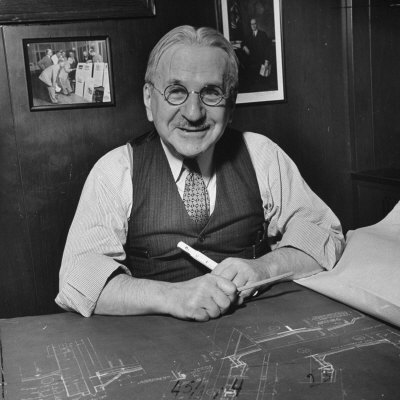 |
Albert Kahn - (March 21, 1869 – December 8, 1942) The foremost American industrial architect of his day. He is sometimes called the architect of Detroit. As a teenager, he received training at the architectural firm of Mason and Rice. Detroit Historical Society - Garden Court Building - Albert Kahn on Wikipedia |
Harry Gesner - (April 28, 1925 - June 10, 2022) An influential California architect. Gesner became internationally known for his visionary style. His Wave House (1957) was an inspiration for the Sydney Opera House. The Wave House - Harry Gesner on Youtube - Harry Gesner on Wikipedia |
 |
Craig Ellwood - (April 22, 1922 – May 30, 1992) was an influential Los Angeles-based modernist architect whose career spanned the early 1950s through the mid-1970s. Although untrained as an architect, Ellwood fashioned a persona and career through equal parts of a talent for good design, self-promotion and ambition. He was recognized professionally for fusing of the formalism of Mies van der Rohe with the informal style of California modernism. The Courtyard Apartment - Craig Ellwood on Wikipedia |
 |
August Endell - (April 12, 1871 – April 15, 1925) was a designer, writer, teacher, and German Jugendstil architect. He is also known as one of the founders of the Jugendstil movement, the German expressionist movement of Art Nouveau. August Endell on Wikipedia - Musical Form in Architecture |
 |
Clough Williams-Ellis - (28 May 1883 – 9 April 1978) Architect and environmentalist Clough Williams-Ellis created the village of Portmeirion, Wales, helped establish the British National Parks system, and became knighted for his "services to architecture and the environment." Clough Williams-Ellis on Wikipedia - list of works - village of Portmeirion |
 |
Addison Mizner - (December 12, 1872 – February 5, 1933) was an American resort architect whose Mediterranean Revival and Spanish Colonial Revival style interpretations left an indelible stamp on South Florida, where it continues to inspire architects and land developers. In the 1920s Mizner was the best-known and most-discussed living American architect. Mizner was the visionary behind development of Boca Raton, Florida. Addison Mizner on Wikipedia - Beachfront Estate |
John Yeon - (October 29, 1910 – March 13, 1994) was an American architect in Portland, Oregon, in the twentieth century. He is regarded as one of the early practitioners of the Northwest Regionalist Style of Modernism. His output was limited, but was influential on later generations of Portland architects. John Yeon on Wikipedia - Swan House - Aubrey Watzek House |
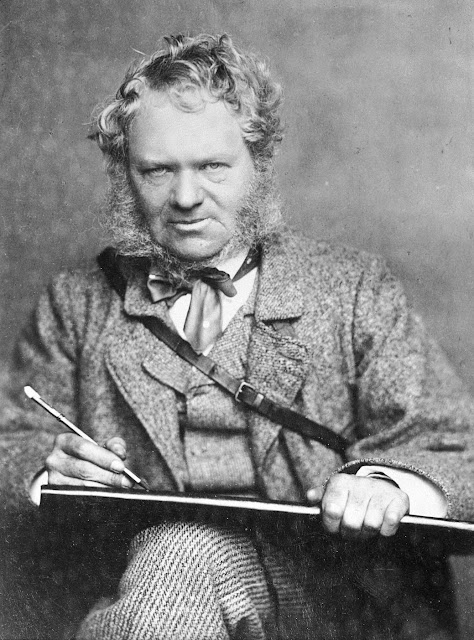 |
Edwin Landseer Lutyens - (29 March 1869 – 1 January 1944) was a British architect who is known for imaginatively adapting traditional architectural styles to the requirements of his era. He has been referred to as "the greatest British architect" and is known best for having an instrumental role in designing and building a section of the metropolis of Delhi, known as New Delhi, which would later on serve as the seat of the Government of India. Edwin Lutyens on Wikipedia - The Lutyens Trust - Edwin Lutyens on Youtube |
 |
James Marston Fitch - (1909–2000) was an architect and a Preservationist, one of the founders of the Graduate School of Architecture, Planning and Preservation at Columbia University in 1964. He was a member of the faculty there from 1954 to 1977, and received an honorary Litt.D. in 1980. The ACSA (Association of Collegiate Schools of Architecture) honored Fitch with the ACSA Distinguished Professor Award in 1985-86. James Marston Fitch on Wikipedia - Fitch Foundation - Lecture on Historic Preservation |
 |
Konrad Wachsmann - (May 16, 1901 – November 25, 1980) was a German modernist architect. He is notable for his contribution to the mass production of building components. He designed a summer house for Albert Einstein, one of his lifelong friends, in Caputh, Brandenburg. He received the Prix de Rome from the German Academy in Rome in 1932. In 1938 he emigrated to Paris and in 1941 to the United States, where he began a collaboration with Walter Gropius and developed the "Packaged House System", a design for a house which could be constructed in less than nine hours. Konrad Wachsmann on Wikipedia - Konrad Wachsmann Seminar - Das Haus Dr. Estrich |
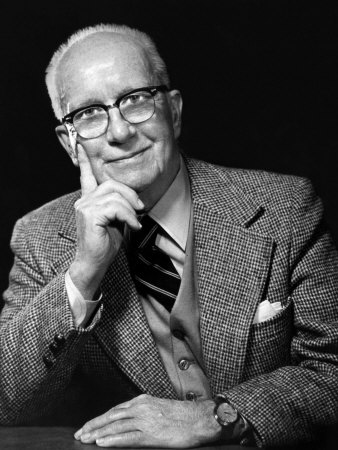 |
Buckminster Fuller - (July 12, 1895 – July 1, 1983) was an American systems theorist, architect, engineer, author, designer, inventor, and futurist. Fuller published more than 30 books, inventing and popularizing terms such as "Spaceship Earth", ephemeralization, and synergetic. He also developed numerous inventions, mainly architectural designs, the best known of which is the geodesic dome. Buckminster Fuller on Wikipedia - Buckminster Fuller Institute - Buckminster Fuller on Youtube |
 |
Henry Van De Velde - (3 April 1863 – 15 October 1957) was a Belgian architect, painter, and interior designer. Together with Victor Horta and Paul Hankar he could be considered as one of the main founders and representatives of Art Nouveau in Belgium. Van de Velde spent the most important part of his career in Germany and had a decisive influence on German architecture and design at the beginning of the 20th century. Van De Velde on Wikipedia - Van De Velde Architecture at UNESCO - Van De Velde on Youtube |
 |
John Parkinson - (12 December 1861 - 9 December 1935) By 1896, Parkinson had designed the city's first Class "A" fireproof steel-frame structure: the Homer Laughlin Building at Third Street and Broadway. His 1901 Susana Machado Bernard House and Barn has been designated as a Historic Cultural Monument and listed in the National Register of Historic Places. John Parkinson on Wikipedia - John Parkinson on Youtube - The architect of Los Angeles |
 |
John Ward Pawson - (born 1949) is a British autodidact architect whose work is known for its minimalist aesthetic. Pawson's work focuses on ways of approaching fundamental problems of space, proportion, light and materials. He was appointed a Commander of the Order of the British Empire (CBE) in the 2019 New Year Honours for services to Design and Architecture. John Ward Pawson on Wikipedia - John Ward Pawson on Youtube |
